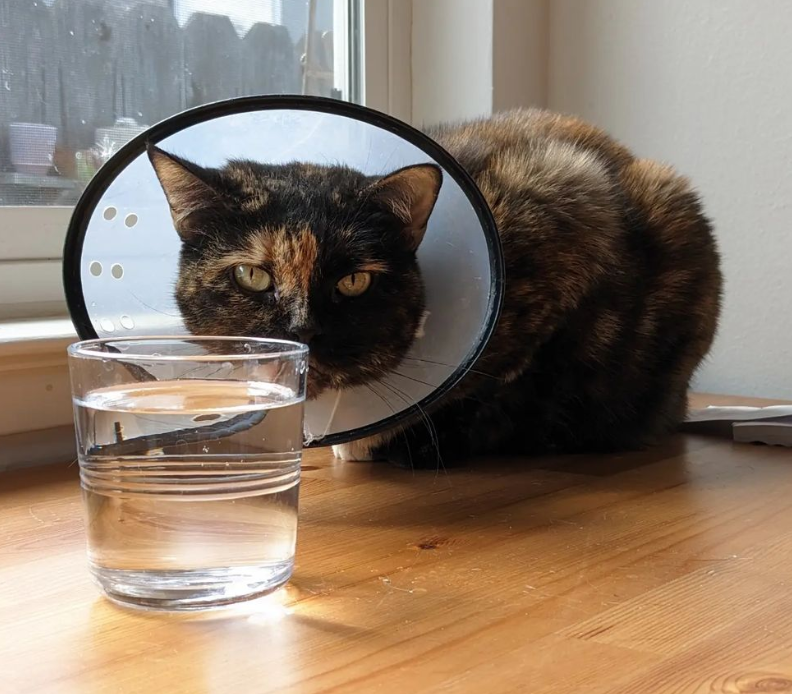
We’ve all heard that spaying our pets is important, but the cost to spay a cat can sometimes give owners pause. The price tag is worth it, however, as this procedure is a vital part of your cat’s health.
The most obvious reason to spay your cat is to prevent pregnancy. Spaying involves removing a female cat’s reproductive organs, eliminating the chance of your cat getting pregnant. But did you know that spayed cats typically live longer than non-spayed cats? They’re also less likely to develop certain cancers and infections.
Cost of Spaying a Cat
When you’re ready to schedule your cat’s appointment, you’ll likely wonder, “How much is it to spay a cat?” The world of veterinary medicine is a complex place, and there is often no one-size-fits-all answer to a question. Many factors can affect the cost of spaying a cat. These include your location, your care provider, and the facility they use.
Average Cost to Spay a Cat
So how much does it cost to get a cat spayed? A ballpark price range is between $150 and $300. As mentioned, different factors can influence the cost. Remember that spaying pertains only to female cats. Males are neutered, and the neutering costs can be lower.
Your location can affect the cost of spaying a cat.
Spaying costs differ from place to place. If you live in a city with a higher cost of living, there’s a good chance that spaying your cat will cost a bit more, too. Veterinary clinics in more rural areas may offer lower rates due to a lower cost of living. Pet owners who live in an area with several clinics may also see lower rates due to competitive pricing.
The payment method can lower the cost.
The cat spay cost can also vary according to which kind of payment method you use. Some clinics may offer a discount if you pay the amount in full or in cash. Others may allow you to set up a payment plan so that you can break up payments into more affordable sums. While pet insurance generally doesn’t cover spaying, if you have added a wellness plan to your policy, you can be reimbursed for all or part of the cost to spay your cat.
Your Cat’s Medical History May Affect the Price.
Your cat’s medical history can also influence the cost to spay a cat. Cats that are in renal failure or heart failure, cats prone to infection (eg, those with feline leukemia virus), or cats with a history of unexplained, heavy bleeding will require additional monitoring and care during and after the surgery. If your cat is in heat (which means she is fertile and ready to mate), the cost can increase because she’ll need extra monitoring and more precise surgical technique during surgery. A cat who is pregnant (or discovered to be pregnant during surgery) may also have an increased spay fee.

Different operating facilities have varying cat spay costs.
The veterinarian’s office you choose will have its own rates. Some clinics offer advanced surgical techniques to improve recovery and/or specialized monitoring equipment for enhanced safety. Some veterinary surgeons have specialized training. Advanced training and state-of-the-art monitoring equipment often come with an increased price. Contacting multiple clinics in your area can help you find the lowest-cost option. Some vets specialize in spaying and neutering, and these clinics may be able to offer a lower price than others.
Potential Complications and Risks of Spaying your Cat
Spaying a cat is a routine procedure that virtually every pet should undergo. As with any surgery, there are small risks for complications. Keep in mind that these risks are unlikely, but you should still be aware of them. Complications may change how much it costs to spay a cat.
Some cats may have a negative reaction to anesthesia or experience internal bleeding during surgery. Post-operative infections can also occur. Your vet will tell you how to monitor the incision area and explain ways to reduce the chance of infection and other complications after surgery. Another potential issue that your cat may experience after spaying is reaction to the suture materials. This can lead to prolonged wound draining, or in other words, a wound that doesn’t heal as quickly as it should.
Different Types of Facilities and Their Costs
When you’re ready to schedule your cat’s appointment to get spayed, look around at multiple types of medical facilities near your home. Private veterinary practices are most people’s go-to options, but don’t forget to check into lower-cost alternatives.
Some veterinary clinics specialize in spaying, which means they see a high volume of pets but are also able to offer high-quality care.
Call your local animal shelter for assistance with finding low-cost resources in your county. Charitable organizations such as the Humane Society offer low-cost spay appointments. The fee for these appointments can be as low as twenty dollars. Governmental programs may offer vouchers for low-cost spay appointments as well.
Benefits of Spaying a Cat
There are numerous health benefits to spaying a cat. Spayed cats can live nearly 40% longer than intact (non-spayed) cats. Spaying eliminates the risk of uterine and ovarian cancer as well as uterine infections. It also decreases the likelihood of developing mammary gland cancer, mastitis (mammary gland infection), and mammary gland hyperplasia (enlarged mammary gland tissue). Good physical health isn’t just great for your cat, it’s also advantageous to your wallet since treatments for these diseases can be costly.
While some pet owners worry their cats won’t have the same personality after surgery, cat behavior after spaying often changes for the better! Spayed cats are less likely to roam, which means they’re safer from moving vehicles and getting into altercations with other animals. Spaying also prevents the intense behaviors seen when cats go into heat.
Spaying doesn’t just benefit your cat but the entire ecosystem. Overpopulation of cats is a major concern in many regions, and they’ve devastated bird populations.
Pet Insurance and Wellness Plans
When you adopt a pet, you should consider getting an adult cat/kitten insurance plan for them. While pet insurance doesn’t cover routine care such as spaying, some companies provide additional financial options that can be helpful.
Specific plans and benefits differ between insurance companies. At Embrace Pet Insurance, we offer Wellness Rewards. Wellness Rewards is a pet wellness plan that can assist with budgeting for spaying and other routine pet expenses. This way whether it’s accidents, illness or just routine care, you’re protected from unexpected pet expenses.

Comparison of Spay and Neuter Costs
The cost to spay a female cat is typically higher than neutering a male cat and can be as much as $300. This price difference, which can be as much as $50 or $100 more than for male cats, is due to the fact that the surgery is much more complicated for females. Spaying a cat requires an incision into the abdomen to remove the ovaries and uterus. Neutering a male cat, on the other hand, involves a smaller incision in the scrotum to remove the testicles. In addition, spaying a cat typically takes 30-60 minutes, while neutering a male cat takes 15-30 minutes. Spaying a cat is a more invasive surgery than neutering, so there is a greater risk of complications such as bleeding, infection, and anesthesia-related problems, as well as the chance that they may be in heat or pregnant.
The male version of spaying (neutering) usually costs less. The average cost of neutering a male cat is around $75 to $100. Like spaying, neutering your male cats is an integral part of pet ownership. Neutering your male cat can help him live 62% longer.
Wrapping Up The Costs to Spay a Cat
How much does it cost to spay a cat? The answer depends on a range of factors, including your location, choice of facility, and your cat’s medical history. If money is a concern, check local listings for low-cost spay clinics as well as government programs available. Pet owners should always consider pet insurance since a robust plan with wellness benefits can keep medical costs low and predictable.